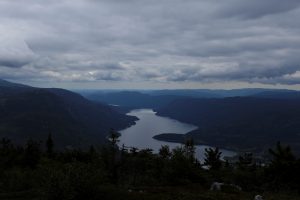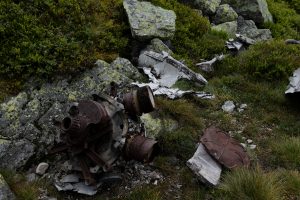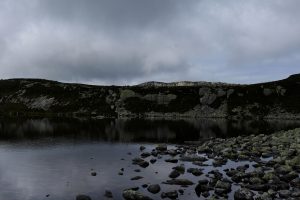(About the title: it was the motto of Kodak, a manufacturer of argentic cameras, “clic clac” was the sound of the shutter when you took a picture)
You may know it (mostly because I have told you), but one of my main hobbies is photography. I would not qualify myself as a professional photographer, but rather as an amateur with a bit of experience.
My father was very interested in photography, and he always took a camera whenever we were leaving on vacation, and this is how I landed my hands on a camera for the first time. I thought it was fun to take pictures and then to show them to others.
When I was younger, my mother used to buy us, me and my brother, disposable cameras when we left for summer camps. They were not very sophisticated, but it was more than enough for a 9-year-old to register memories of a three-week camp. We used to send the best pictures to our grandparents, to show them how awesome was our stay, and to show them our new (sadly temporary) friends during the summer.
As I grew older, I could start to use my father’s camera, a Nikon D70, who was, at the time, one of the best performing DLSR from Nikon, and he came out relatively cheap, if you compared it to other reflexes of the same quality. And with it, he had three objectives: the regular one, sold with the body of the camera, a tele objective (with a focal 70-220, which corresponds to a zoom up to x7), and a wide-angle objective with which you cannot zoom, but distorts a bit the image (giving a “fish-eye” impression). I really enjoyed playing with the three objectives, but my father thought it was not very handy, and eventually, I ended up carrying the whole bag and taking all the pictures alone, and it was quite fun!
But at that time, I did know very few about photography, and I used to shoot all my pictures in full auto mode (which a lot of photographers consider a heresy, especially with a camera like the one I was carrying). And then, in 2010, I went to Canada. My father had since sold the big DSLR to opt for a small numeric camera from Panasonic, very light, and I had the right to take it with me in the other side of the Atlantic Ocean. I was really impatient, because the landscapes in Canada are really beautiful (and in some places, look a bit like Norway!), and since I was in a camp working hand in hand with the Office of Forestry in Quebec, I would have the opportunity to take pictures of the wildlife! There, one of the organizers of the camp knew some things about photography, and he taught me how to make a better use of my camera, by using the manual mode. What’s the difference, you’ll ask? Huge.
To understand it, let’s make a small explanation on how the camera works. Basically, it is a series of mirrors, with at the end, a captor that collects the light from the source. This captor is hidden by a mirror, and this mirror guides the light towards the viewfinder of the camera through a prism (that flips the image so that we can see through the viewfinder). Before this mirror, there is a complex system of lenses, the objective, that allow the optical zoom, and there is a diaphragm, that controls the quantity of light going through it. Once we have all these pieces, we can talk about the three “biggest” parameters you play with a camera:
- The aperture of the diaphragm. This controls the depth of field of the photo: if you want to only have the object in the foreground to be sharp, and the rest of the field to be blurred, you’ll go for a small aperture. In contrary, if you want to have all of your photo to be sharp, you have to choose a great aperture. The second thing the aperture decides is the brightness of the photograph: a small aperture will make a bright photograph; a great aperture will make for a darker one.
- The shutter speed. When you press the button on your camera, you won’t see anything through the viewfinder for a fraction of a second (on DSLR only). During this moment, the mirror in front of the captor will rise, letting light reach it, and actually taking the picture. The time the mirror is risen is the shutter speed. It mainly influences the brightness of the photograph: with small speeds, you’ll have bright photograph, but if you are shooting a moving target, you may as well get motion blur, so you have to take care! Higher speeds will make for darker pictures.
- The sensibility of the captor. This also decides the brightness of the pictures (it is defined in ISO numbers, usually going in a scale of powers of 2). The higher the number, the brighter the picture, but it can lead to noise if the captor is not well-factored.
When you take a picture in full auto-mode, the camera takes the point it uses to make the auto-focus and sets it as the “point zero” for the brightness, and plays with all the parameters above to make it so this point is at a certain level of luminosity. It is easy, but not very pleasing: you are not really taking the picture, you are telling your camera to do so. So, in Canada, I started to play with these different parameters… and often messing them up, ending up in too bright or too dark, or even blurred photographs. But I had lots of fun taking them and that is what’s important.
After some time, I lost interest in photography, and I started my preparatory classes, so I didn’t really have time for hobbies. And I entered Mines ParisTech. There, we have an association dedicated to covering the events of our student’s life, and they have some gear to do it: a DSLR, two other video cameras and a GoPro. Little by little, I came back to taking pictures, and my father had bought a newer camera, a bridge (a hybrid between a numeric camera and a DSLR: it works the same as a DSLR, but there is no mirror nor prism, light reaches directly the captor and you have a live view in the viewfinder, like a video camera) from Sony. So, I took it with me in French Guyana last February, and I found back the feelings I had in Canada, but now with a bit more experience and knowledge. And I also started to use a software to edit my pictures. It seems strange at first, but taking the pictures with the right settings is approximately 75% of the work. When the picture is saved in your SD card, it is using the parameters of the captor, on which you have little to no margin of maneuver. So, treating the picture after taking it is a way to have this margin. And it can also make for some of the mistakes you made when taking the picture (too bright, too dark, wrong framing, …)!
And after this, I use my trips all around Europe (Vienna, Saint-Petersburg, Amsterdam, Brussels and finally Norway) to take lots and lots of pictures (I have approximately 50 GB of pictures in my laptop currently!). When I knew I was going to Norway, I started to look if I could not by my own DSLR and give back his camera to my father (since le last time he saw it was 6 months before!). And I finally got my hands on a Nikon D7200, which is a midrange DSLR, good for experienced amateurs, but not a pro camera (since the price gap is nearly 1000$ from midrange to pro cameras). With it, rather than taking the Nikon objective sold with it (who suffer from design problems and have a lot of distortion and sometime chromatic aberration), I opted for an objective from Tamron, 24-70mm (x3 zoom), and most importantly, with a constant aperture (when you zoom, the minimum aperture of an objective tends to increase mechanically, it requires a special type of mechanism to allow a constant aperture, whichever focal length you use, and it becomes possible to make macro-photography – taking pictures of small things with a lot of detail) On top of it, I put a polarizing filter, to be able to decide whether or not the reflection on water of windows appear in the picture.
That’s it for the historic/technic part. Now, for the reasons I like photography. It really struck me when I first was in Guyana, but when I go in a foreign country, I like to see and to understand how people live there, what they are experiencing in their everyday life, what is their environment and what do they see. And this I what I try to express through the pictures I take: to capture a moment, an emotion of everyday life in the city I’m in, or simply, something I saw in a glimpse and that I find funny or interesting. For these reasons, I take very rarely pictures of monuments: a lot of people have taken pictures of them, that are surely better than the one I would have taken. But I’m sure that nobody took the picture of the snack seller right next to it, who is currently cooking, with the steam nearly hiding him.
When it comes to taking pictures of people, I really prefer them not to look at the camera. The posture we adapt when we know we’re being photographed is not natural at all: the smiles are (a bit) forced, we feel a bit ill-at-ease, whereas if I do not tell people they’re being photographed, I can capture something much more natural, ending up in a better picture.
Finally, I find that photography is something really particular, and I requires training, and even with training, few of the pictures I take are worth being saved : in Copenhagen, I took 1793 pictures in my whole 3-day trip (you read the figure well), and among them, I kept 26 that sum up what I felt in the city. And I the end, I find more and more that it changes the way I look at things, at people, cities, landscapes, always looking for the small details, the things you do not see at the first glimpse. And this is what I find cool!
If you want to get a sample of some of my pictures, you can go > HERE <


